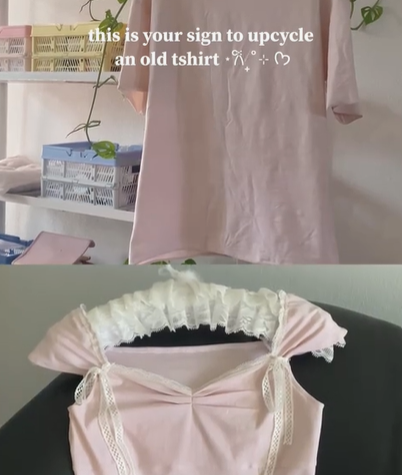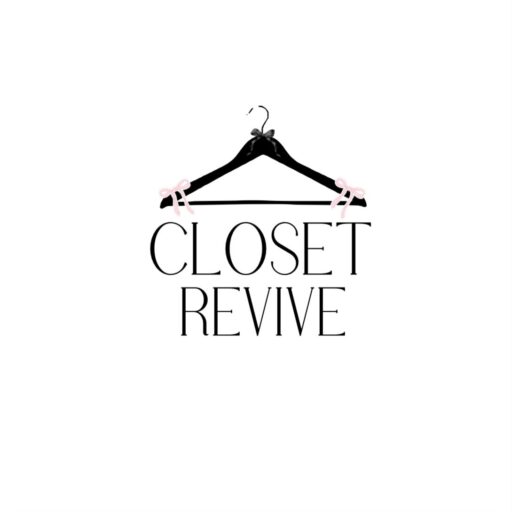Your cart is currently empty!

DIY Fashion: Upcycling Thrifted Clothes
In a world increasingly aware of sustainability, the allure of DIY fashion is growing stronger than ever. Upcycling thrifted clothes has emerged as not just a trend but a powerful movement combining creativity, sustainability, and personal style. With the fashion industry being one of the largest contributors to pollution, finding ways to refresh and repurpose old garments offers a tangible, fun way to make a difference. If you’re looking for ways to express your unique style while being environmentally conscious, here’s why and how upcycling thrifted clothes can transform your wardrobe and make you a part of the solution.
The Art and Value of Upcycling
Upcycling is the process of repurposing or altering items to give them a new life, enhancing their original value. Unlike recycling, which breaks down items into their raw materials, upcycling retains the basic fabric or design of the clothing but reimagines it in a creative way. Whether it’s turning an oversized shirt into a chic crop top or converting a pair of old jeans into trendy shorts, the possibilities are endless. The charm of upcycling lies not only in the outcome but in the journey of crafting something distinctively yours.
The Environmental Impact of Upcycling
Fast fashion is notorious for its heavy carbon footprint, with millions of tons of textile waste ending up in landfills each year. Upcycling thrifted clothes means giving those items a second chance, significantly reducing waste and limiting the demand for new clothing production. Each piece you reimagine is a step toward a more sustainable future. By choosing to upcycle, you help minimize the exploitation of resources and contribute to a reduction in greenhouse gas emissions. It’s fashion that cares for the planet—a statement that not only turns heads but also changes perspectives.
Getting Started: Tips for Thrift Shopping
Upcycling starts with the hunt. Thrift stores are treasure troves filled with potential, offering affordable, high-quality garments that are just waiting for a creative touch. Here’s how to make the most of your thrift shopping experience:
- Go with an Open Mind: Enter the store with an idea of what you want but be flexible. The best pieces often aren’t what you initially expect.
- Look Beyond Labels: Focus on fabric quality, color, and fit rather than the brand. A well-made but outdated piece can easily become the canvas for your project.
- Consider Sizing Up: Larger items provide more fabric to work with, giving you more freedom to customize.
- Inspect for Damage: Small imperfections like missing buttons or loose seams are fine; they’re easily fixable. However, check for stains or tears that might be harder to repair.
Simple Upcycling Ideas for Beginners
If you’re new to DIY fashion, start with small, manageable projects before moving on to more complex designs. Here are a few beginner-friendly ideas to inspire your first project:
- Cut and Crop: A simple yet transformative approach is turning oversized T-shirts or sweatshirts into cropped tops or tank tops. With just a pair of sharp scissors, you can create a fresh, new look.
- Add Patches or Embroidery: Personalize a plain denim jacket by sewing on patches or embroidering patterns. This touch not only adds color and texture but tells a story that reflects your personality.
- Transform Old Jeans: Convert full-length jeans into trendy distressed shorts or even a denim skirt. Add unique touches with fabric paint or lace trim for a bespoke touch.
- Tote Bags from T-Shirts: Convert old graphic tees into reusable tote bags. Cut off the sleeves and stitch the bottom hem; this project is as easy as it is eco-friendly.
Tools You’ll Need
Having the right tools can make or break your upcycling experience. A few essentials include fabric scissors, sewing needles and thread, fabric glue, iron-on patches, a measuring tape, and a sewing machine if you’re ready to invest in one. These tools provide the foundation for most DIY projects and open the door to experimenting with various techniques.
Creativity and Self-Expression
One of the most rewarding aspects of upcycling thrifted clothes is the sheer creativity it unleashes. In a world of mass-produced fashion, upcycling allows you to stand out, showcasing your individual style and resourcefulness. Every project becomes an opportunity to express who you are, repurposing the old to create something uniquely new. The process is not only cost-effective but deeply satisfying.
Embracing Imperfection
DIY fashion isn’t about perfect finishes or flawless seams; it’s about creating with heart. Imperfections give character and tell a story. Upcycled pieces, by their very nature, celebrate the quirky and unique. Embrace the journey, and don’t be afraid to experiment. You may make mistakes, but these moments often lead to unexpected, delightful results.
Upcycling thrifted clothes is more than just a hobby; it’s a statement of conscious living. It’s about valuing resources, cherishing creativity, and advocating for a more sustainable fashion industry. So, pick up your sewing kit, head to your local thrift store, and start transforming yesterday’s fashion into tomorrow’s standout pieces. With each stitch, cut, and embellishment, you contribute to a movement that celebrates individuality and respects the Earth.
